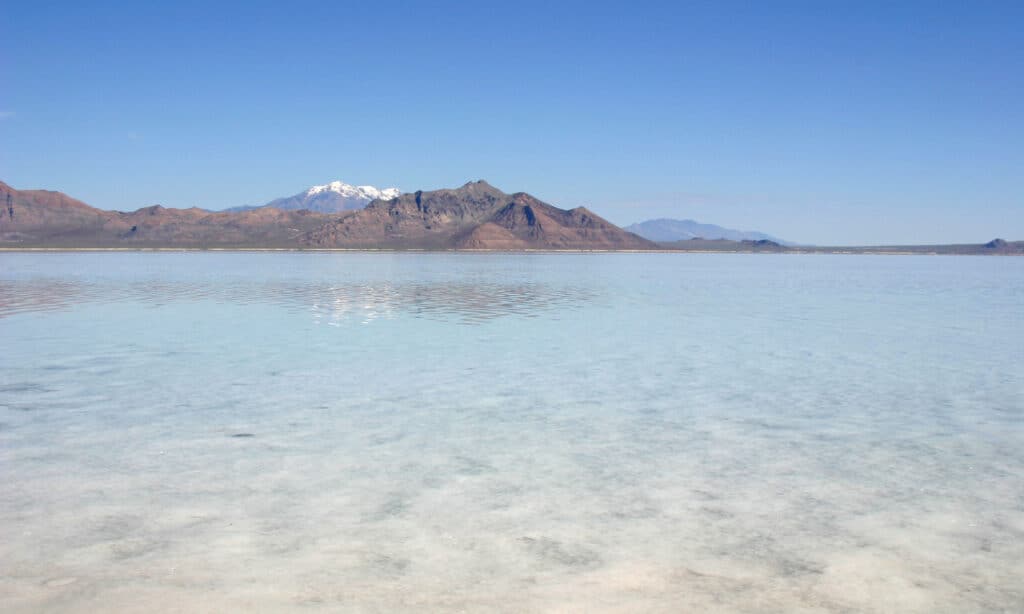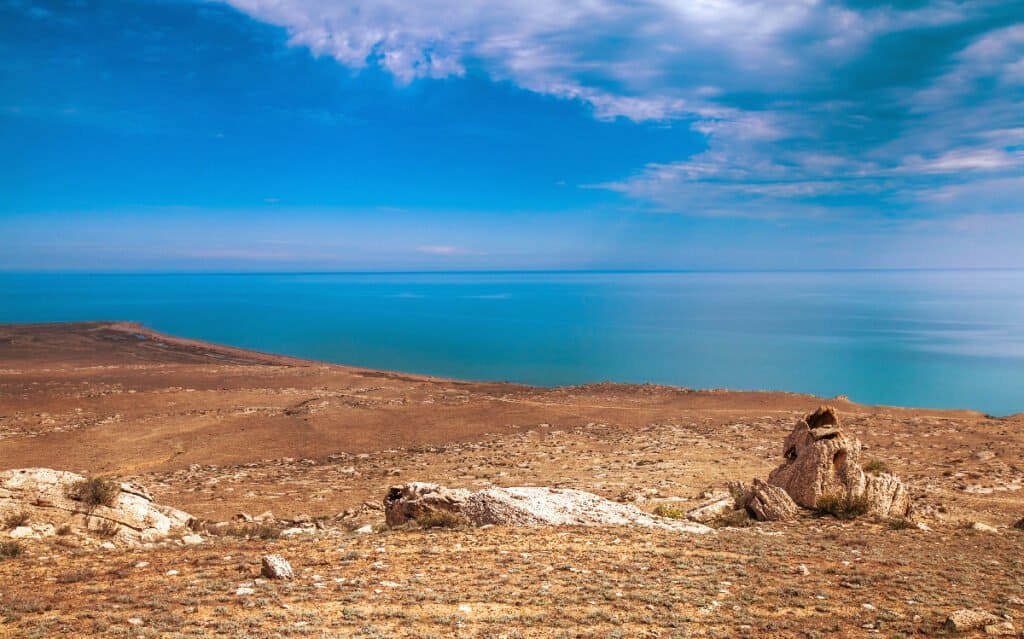Did you know there are many types of lakes? These bodies of water are organized by how they formed and how they are fed, alongside other factors. For example, glacial lakes are formed by glacial activity. In this article, we discover what endorheic lakes are, how they form, and list some examples in the world.
What are Endorheic Lakes?

Water from these beautiful lakes never makes it into the ocean.
©iStock.com/beccarie
Endorheic lakes have no outlet. You can find them typically at the terminal end of a water system. They are usually fed by rivers and rainfall, and in most cases, water only leaves the lake through evaporation. In some cases, water may also leave the lake through the bottom by sinking underground into aquifers or into the groundwater supply. Others drain into nearby swamps or marshes. However, water from a true endorheic lake never makes it into the ocean. A lake that drains into a swamp or marsh that eventually drains into the ocean is called a cryptorheic lake.
Most endorheic lakes are saltwater lakes. In other types of lakes, minerals such as salt get washed away into the lake’s outlet, such as a river or the ocean. In an endorheic lake, the minerals are left behind in the evaporation process. For this reason, some of these lakes have high levels of minerals such as fluoride.
Other names for an endorheic lake include terminal lake or sink lake.
How Do Endorheic Lakes Form?
Endorheic lakes form in endorheic basins. These basins can be found in any type of climate but are more common in dry desert climates that do not see much rainfall. In areas with more rain, over time the precipitation will cause the lake to spill over, creating temporary or permanent drainage for the lake in the form of rivers or streams.
They also tend to form in mountainous areas where there are more physical barriers to water reaching the ocean. They are also often located well into inland areas, far from oceans.
Because of this, there are lakes that were once endorheic but have changed to be exorheic and vice versa. An exorheic lake is one that drains to another body of water or the ocean. For example, experts believe that the Malheur/Harney lake system in Oregon was connected to the ocean through an outflow channel to the Malheur River as recently as 1,000 years ago.
Qualities of Endorheic Lakes
Some endorheic lakes are seasonal, like Lake Eyre in Australia. It only fills fully a few times every 100 years. It is quite dry for half the year and then gets more full during the rainy season.
Because evaporation is the primary way water exits, there are often mineral deposits left behind during drier months. That is why many of these lakes are surrounded by salt flats which are crusts of salt and other minerals on the ground. Salt flats can be dangerous as the crust can disguise deep peat wetlands that may be dangerous if you fall into them. Even so, salt flats, such as the Bonneville Salt Flats, are often used to set vehicle land-speed records because they are long and extremely flat.
Well-Known Endorheic Lakes

The Caspian Sea is the largest endorheic lake in the world.
©Marina Khlybova/Shutterstock.com
Many lakes you’ve already heard of are actually endorheic lakes.
For example, the Caspian Sea is the largest endorheic lake in the world. It is also the world’s largest inland body of water, and the world’s largest lake of any kind. It is surrounded by the countries Kazakhstan, Russia, Iran, Azerbaijan, and Turkmenistan.
The Great Salt Lake in Utah is also an endorheic lake. It is the 8th largest such lake in the world. Because of the high salinity, the lake is often referred to as “America’s Dead Sea,” because if you swim in it, you will have an easier time floating than in most bodies of water.
The Dead Sea is also an endorheic lake. It lies between Israel and Jordan. The lake’s claim to fame is that it hosted one of the world’s first health resorts. People have used the mineral-rich mud for healing and beautifying and have enjoyed floating in the salty water for thousands of years.
Endorheic Lakes are Changing
Unfortunately, many endorheic lakes are at risk due to climate change or human activity. For example, The Dead Sea’s surface area has shrunk by just under 200 square miles since 1930. Many others are shrinking because water is diverted or dammed from the rivers that have fed the lakes throughout history.
The Aral Sea which is primarily in Kazakhstan and Uzbekistan has almost nearly dried up and has mostly turned into a new desert which has been given the name the Arakulum Desert. Experts believe it has dried up due to overuse of the water that feeds the lake for irrigation.
The Great Salt Lake is also changing due to drought and other conditions. In 1987 it covered 3300 square miles. In 2022, it only covered 950 square miles.
The photo featured at the top of this post is © Marina Khlybova/Shutterstock.com
FAQs (Frequently Asked Questions)
What is an endorheic lake?
Endorheic lakes are a type of lake that has no outlet.
Why do endorheic lakes form?
Endorheic lakes form in endorheic basins. These basins can be found in any type of climate but are more common in dry desert climates that do not see much rainfall. In areas with more rain, over time the precipitation will cause the lake to spill over, creating temporary or permanent drainage for the lake in the form of rivers or streams.
What kind of lake is the Caspian Sea?
The Caspian Sea is an endorheic lake. It is the largest one in the world.
Is the Dead Sea a lake?
Yeah, the Dead Sea is technically an endorheic lake.
Why is the Great Salt Lake Shrinking?
Experts believe the Great Salt Lake is shrinking due to years of drought in the area, affecting the rivers that feed the lake.
Thank you for reading! Have some feedback for us? Contact the AZ Animals editorial team.






